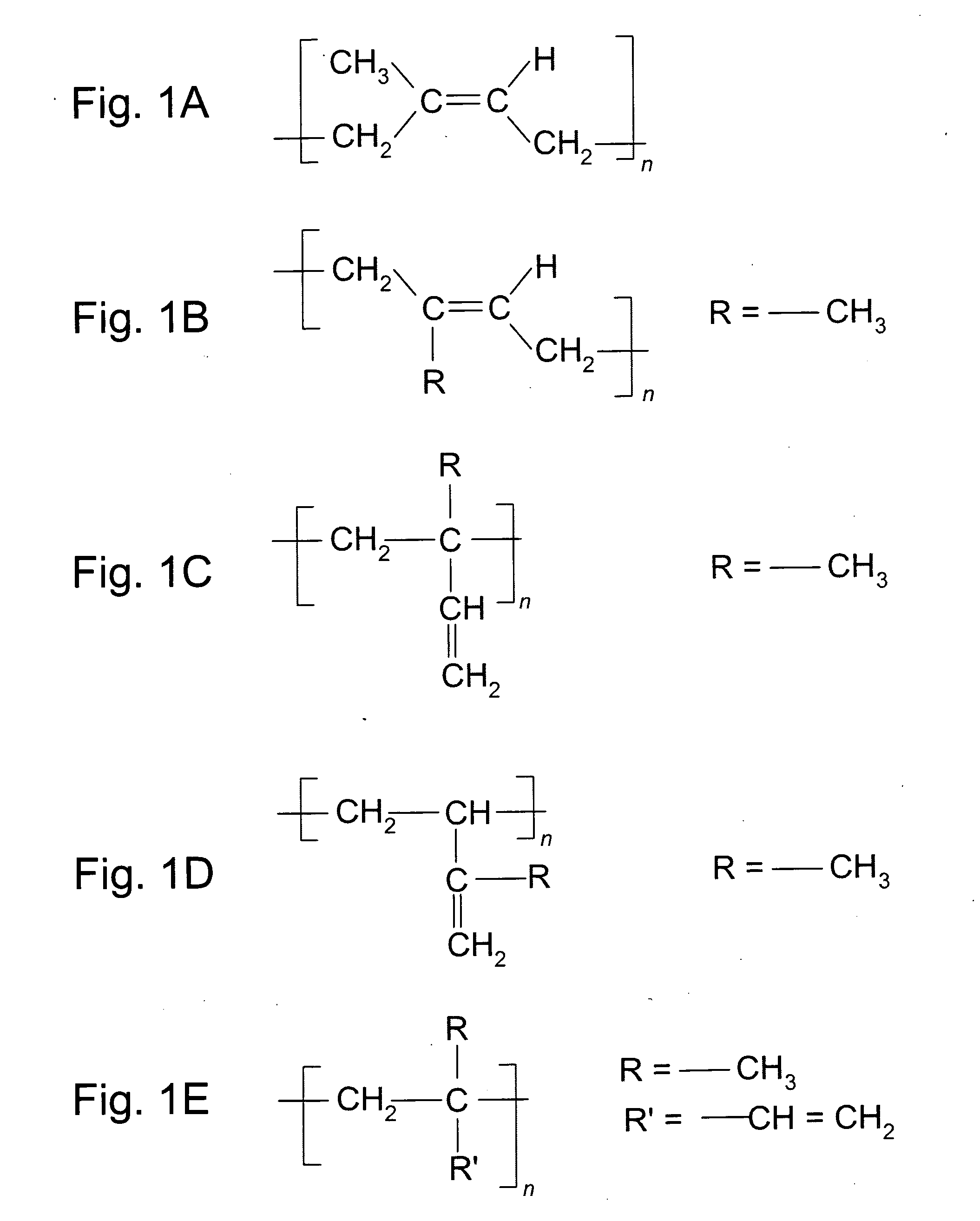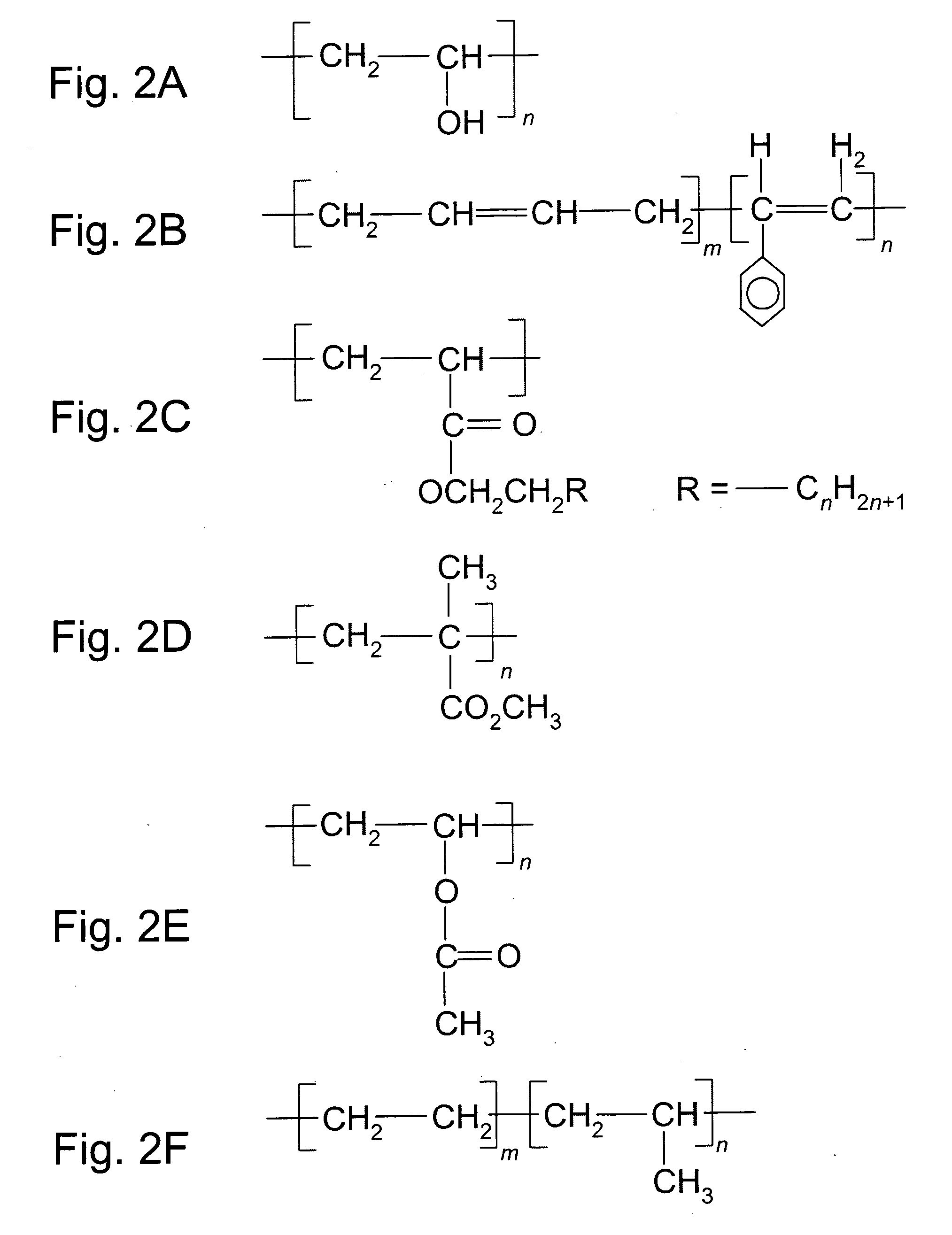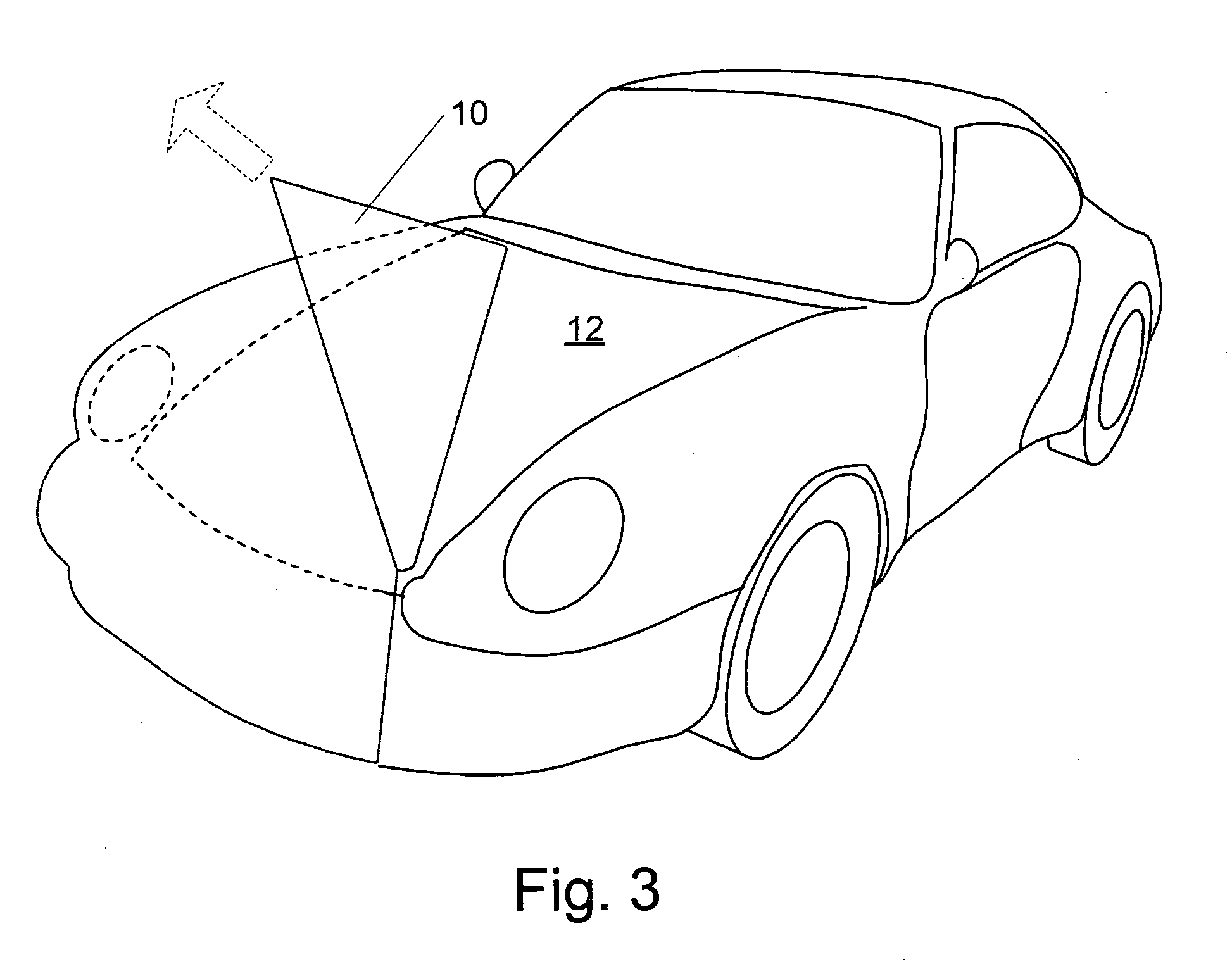Protective coating compositions, systems, and methods
a technology of protective coatings and compositions, applied in the direction of coatings, conjugated diene hydrocarbon coatings, material nanotechnology, etc., can solve the problems of difficult application to, or removal from, the target surface, and the lack of certain desired functional attributes of the coating, so as to improve the elasticity or tensile strength of the coating, improve the peelability, and improve the effect of crystallinity
- Summary
- Abstract
- Description
- Claims
- Application Information
AI Technical Summary
Benefits of technology
Problems solved by technology
Method used
Image
Examples
Embodiment Construction
[0038] The present invention relates to a protective coating that may be used for a variety of known surfaces, including metal, wood, plastic, leather, glass, paint, or other synthetic or natural surface materials. In certain embodiments, the protective coating systems are based on elastomeric polymers having isoprene or isoprene derivatives as the monomer units. For example, the useful polymers are contemplated to include natural and synthetic latex polymers. FIG. 1A-E show a basic isoprene unit and representative isoprene derivative units that may be used in the present invention. As used herein, “polymer” may be combination of one or more of the monomers. Polymers so composed provide enhanced protection through their conjugated backbone. Vulcanization or a vulcanizing agent, such as sulfur or sulfur-based compounds, or cross-linking agents, known in the art, provide (1) pre-existing vulcanization and / or (2) supplemental cross-linking or vulcanization under certain conditions that...
PUM
| Property | Measurement | Unit |
|---|---|---|
| size | aaaaa | aaaaa |
| size | aaaaa | aaaaa |
| size | aaaaa | aaaaa |
Abstract
Description
Claims
Application Information
 Login to View More
Login to View More - R&D
- Intellectual Property
- Life Sciences
- Materials
- Tech Scout
- Unparalleled Data Quality
- Higher Quality Content
- 60% Fewer Hallucinations
Browse by: Latest US Patents, China's latest patents, Technical Efficacy Thesaurus, Application Domain, Technology Topic, Popular Technical Reports.
© 2025 PatSnap. All rights reserved.Legal|Privacy policy|Modern Slavery Act Transparency Statement|Sitemap|About US| Contact US: help@patsnap.com



